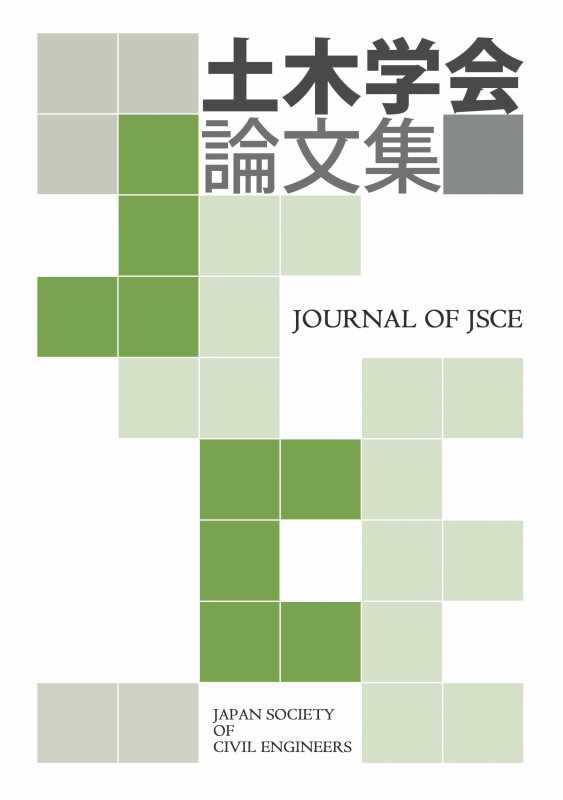6 巻, 1 号
選択された号の論文の13件中1~13を表示しています
- |<
- <
- 1
- >
- >|
Division A: Structural Engineering/Earthquake Engineering & Applied Mechanics
Paper
-
2018 年 6 巻 1 号 p. 1-11
発行日: 2018年
公開日: 2018/01/20
PDF形式でダウンロード (652K) -
2018 年 6 巻 1 号 p. 12-23
発行日: 2018年
公開日: 2018/01/20
PDF形式でダウンロード (861K) -
2018 年 6 巻 1 号 p. 91-109
発行日: 2018年
公開日: 2018/09/20
PDF形式でダウンロード (3263K) -
2018 年 6 巻 1 号 p. 127-146
発行日: 2018年
公開日: 2018/11/20
PDF形式でダウンロード (3071K)
Division B: Hydraulic, Coastal and Environmental Engineering
Paper
-
2018 年 6 巻 1 号 p. 24-31
発行日: 2018年
公開日: 2018/01/20
PDF形式でダウンロード (3264K) -
2018 年 6 巻 1 号 p. 69-77
発行日: 2018年
公開日: 2018/05/20
PDF形式でダウンロード (4153K)
Division C: Geotechnics
Paper
-
2018 年 6 巻 1 号 p. 156-166
発行日: 2018年
公開日: 2018/12/20
PDF形式でダウンロード (1433K)
Technical Report
-
2018 年 6 巻 1 号 p. 32-48
発行日: 2018年
公開日: 2018/01/20
PDF形式でダウンロード (1891K)
Division E: Materials, Concrete Structures and Pavements
Paper
-
2018 年 6 巻 1 号 p. 110-117
発行日: 2018年
公開日: 2018/10/20
PDF形式でダウンロード (740K)
Technical Report
-
2018 年 6 巻 1 号 p. 49-68
発行日: 2018年
公開日: 2018/03/20
PDF形式でダウンロード (4076K)
Division F: Construction Engineering and Management
Paper
-
2018 年 6 巻 1 号 p. 78-90
発行日: 2018年
公開日: 2018/08/20
PDF形式でダウンロード (3087K)
Division G: Environmental Systems and Engineering
Paper
-
2018 年 6 巻 1 号 p. 118-126
発行日: 2018年
公開日: 2018/10/20
PDF形式でダウンロード (885K) -
2018 年 6 巻 1 号 p. 147-155
発行日: 2018年
公開日: 2018/11/20
PDF形式でダウンロード (1059K)
- |<
- <
- 1
- >
- >|
